Understanding Cargo Volume Measurement in Vehicles
September 27, 2023
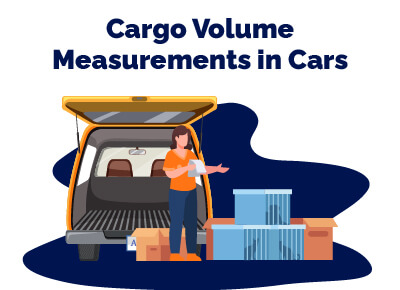

Michael Collado is a car buying expert and has been a professional automotive writer since 2009. He’s written about dealership sales, vehicle reviews and comparisons, and service and maintenance for over 100 national automotive dealerships. Previously, Collado was a copywriter at the ad agency TBWA/Chiat/Day where he worked on brand campaigns for Nissan, ABC Television, Sony PlayStation, and Energizer. His recognition in the ad industry includes awards from Communication Arts and The Clios.
Collado has a Bachelor’s degree from the University of South Florida, with a major in Psychology and a minor in Marketing.
Exploring the Metrics Behind Efficient Space Utilization
So how do you measure cargo volume, and what can you do with that information?
We will look at the world of cargo volume measurement, discussing its various metrics, applications, and the importance of adhering to industry standards.
Table of Contents
Defining Cargo Volume Measurement
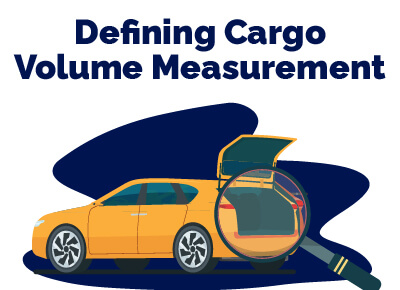 Cargo volume refers to the amount of space available within a vehicle to accommodate goods, luggage, or any other items that need to be transported. This measurement will help you understand how much your vehicle can hold beyond the areas dedicated to the occupants.
Cargo volume refers to the amount of space available within a vehicle to accommodate goods, luggage, or any other items that need to be transported. This measurement will help you understand how much your vehicle can hold beyond the areas dedicated to the occupants.
While cargo volume is a universal concept, it takes different forms in passenger vehicles and cargo vehicles. In passenger vehicles, cargo volume refers to the space in the trunk or storage area where luggage and other belongings can be placed. In cargo vehicles, however, it encompasses the entire interior space of the vehicle, as these vehicles are specifically designed for transporting goods.
Cargo Volume Measurement Metrics
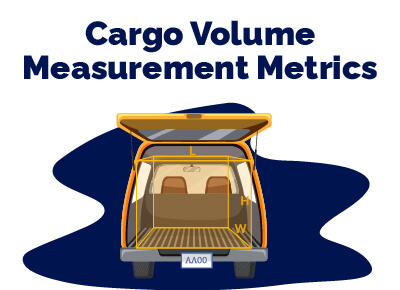 The standard units used to measure cargo volume are cubic feet (cu. ft) and cubic meters (cu. m). These measurements provide a clear understanding of the available space within a vehicle.
The standard units used to measure cargo volume are cubic feet (cu. ft) and cubic meters (cu. m). These measurements provide a clear understanding of the available space within a vehicle.
Calculating cargo volume is relatively straightforward: it involves multiplying the length, width, and height of the cargo area. The formula is as follows:
Cargo Volume = Length x Width x Height
Here’s an example to help you better visualize the concept of cargo volume: Imagine a cargo space with dimensions of 6 feet in length, 4 feet in width, and 3 feet in height. Applying the formula, the cargo volume would be 6 cu. ft x 4 cu. ft x 3 cu. ft = 72 cubic feet.
Interior vs. Exterior Dimensions
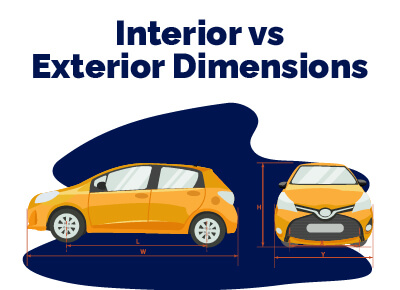 Exterior and interior dimensions can vary greatly on a vehicle. Some of the factors that go into that difference include the shape of the vehicle as well as the design of the interior.
Exterior and interior dimensions can vary greatly on a vehicle. Some of the factors that go into that difference include the shape of the vehicle as well as the design of the interior.
If you happen to be shopping for a vehicle, know both the interior and the exterior dimensions before making your final driving decision.
Cargo Area Configurations
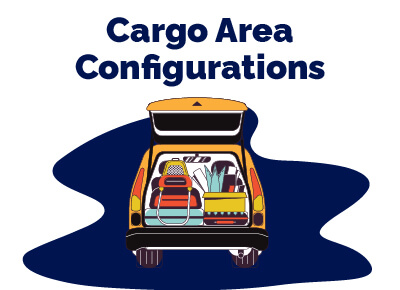 Cargo area configurations can greatly influence the effective utilization of space in vehicles.
Cargo area configurations can greatly influence the effective utilization of space in vehicles.
Some vehicles come equipped with folding seats, removable panels, and modular interiors, allowing users to customize the cargo area based on their specific needs. These features provide versatility, enabling the accommodation of larger or irregularly shaped items.
When you are shopping for an SUV - or simply measuring the cargo volume of your own SUV - consider the cargo volume behind the first, second, and third rows. If you happen to hold lots of passengers in your vehicle, then naturally you will have less space for cargo.
Maximizing Cargo Space Efficiency
 Efficiently using cargo space involves more than just understanding the volume. You will also have to understand the concept of weight distribution.
Efficiently using cargo space involves more than just understanding the volume. You will also have to understand the concept of weight distribution.
So what exactly is weight distribution? This is how you arrange all the items in your vehicle by weight. This allows you to drive more safely with more cargo on board.
As an example, if you are driving an SUV with a high roofline, you will want to make sure not to put too much weight on one side of the vehicle. Poor weight distribution could lead to a rollover during turning or evasive driving situations.
Industry Standards and Regulations
 Vehicle manufacturers and regulatory bodies establish standards and guidelines for cargo volume measurements. These regulations ensure that vehicles adhere to safety standards and that the cargo is transported securely. Ignoring these regulations could lead to safety issues on the road as well as decreased fuel economy.
Vehicle manufacturers and regulatory bodies establish standards and guidelines for cargo volume measurements. These regulations ensure that vehicles adhere to safety standards and that the cargo is transported securely. Ignoring these regulations could lead to safety issues on the road as well as decreased fuel economy.
You can find out the cargo volume limits by checking your vehicle’s owner’s manual or checking the specs of your vehicle on our website. Or you can search by model here >>
Understanding Cargo Volume Measurements In Vehicles
Cargo volume measurement is one of the important things that you can learn about your vehicle. By understanding your vehicle’s cargo volume measurements, you can make the most of the vehicle’s interior and drive more safely on the road.
Best Car Deals by Category
Frequently Asked Questions
Can cargo volume be increased by simply removing seats?
Yes, you can increase cargo volume by removing the seats.
How accurate are manufacturer-provided cargo volume measurements?
Manufacturer-provided measurements offer a starting point, but you also need to consider factors like the shape of the cargo you are loading and its weight distribution.
Are there specific units used globally for cargo volume measurement?
Cubic feet and cubic meters are widely accepted units for measuring cargo volume.
Can I exceed the recommended cargo volume limit in my vehicle?
You don’t want to exceed the cargo volume limit on your vehicle because that may compromise the vehicle’s safety and fuel economy.
How can I calculate cargo volume for irregularly shaped items?
If you have irregularly shaped items, we recommend that you try to break them down into more regular-shaped items. For instance, cubes and rectangles are regular shapes that work well in most vehicle interiors. By using regular shapes, you will be better able to make the most of your cargo volume.
Posted in Uncategorized |




